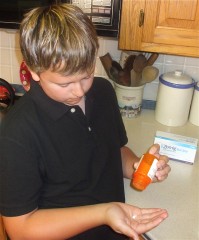Published: October 22, 2009
Whether a parent or a professional caregiver, anyone who has cared for children is likely to have dozens of questions about their development. With the intent of providing up-to-date information on the medical, psychological, educational and legal issues related to children and their development, a leading group of scholars has created The Child: An Encyclopedia Companion. [continue reading…]
Published: October 1, 2009

Image: Stockxpert
Children who eat candies and chocolate every day are more likely to be violent as adults, according to new research. A study of almost 17,500 participants in the 1970 British Cohort Study found that 10-year-olds who ate confectionary daily were significantly more likely to have been convicted for violence at age 34 years.
The study, published in the October issue of the British Journal of Psychiatry, is the first to examine the long-term effects of childhood diet on adult violence. [continue reading…]
Published: September 28, 2009

Image: Stockxpert
Here’s a hot potato will this post invite discussion I wonder?
Children whose mothers go out to work have poorer dietary habits, engage in more sedentary activity, and are more likely to be driven to school than children’s whose mothers are not employed, suggests research published ahead of print in the Journal of Epidemiology and Community Health.
[continue reading…]
Published: August 31, 2009

Researchers at Nationwide Children’s Hospital say parents may not realize school really can be a headache for kids like Peyton (pictured above).
As children and teens begin school again, they are more susceptible to the pain and discomfort of headaches and migraines. The change in schedule, new teachers, new friends and schoolwork can increase stress and consequently, increase headaches. Doctors at Nationwide Children’s Hospital say there are some steps parents can take to help prevent the onset of their headaches during this hectic time of year.
More than a third of children suffer from recurrent headaches – headaches that occur more than once a month. Most are tension headaches, which are less severe and do not occur with nausea or vomiting. Migraines, which account for approximately 25 percent of headaches, are much more disruptive and frequently occur within families due to a genetic component. Migraine pain is usually characterized as throbbing or pounding and made worse by physical activity. Pediatricians typically see an increase in migraine patients as the more severe pain and nausea can cause students to miss school and other daily activities.
“Try to get your kids back into a routine schedule at least two weeks before school starts,” advises Ann Pakalnis, MD, neurologist at Nationwide Children’s Hospital. “Begin enforcing earlier bedtimes, and make sure children are well-rested before beginning a new school year.” [continue reading…]



